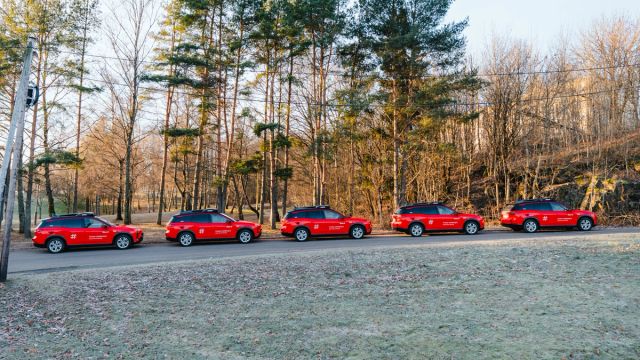Autonomous transport on-demand
Published 02.04.2025

Background
Even though the Oslo region has one of the world's best public transport systems, many feel the need for a private car as well to manage their daily life.
The challenge with widespread private car use is that it's not sustainable, neither for the region nor the planet. To succeed in getting more people to manage without a private car, the public transport system must be expanded with entirely new forms of travel that can give people the same sense of freedom and flexibility that the car provides them today.
Transportation that picks you up on demand
Ruter believes that a good alternative to private cars could be demand-responsive transport that picks you up where you are and takes you to your destination. If the vehicle can also pick up several passengers per trip, we can help reduce the number of vehicles on the roads in our region.
Ruter has already tested several types of ride-sharing based demand-responsive transport, for example, Age-friendly transport in several districts of Oslo. The key to being able to launch similar services on a large scale across the entire region is to use autonomous vehicles. This makes the transport services cheaper to operate, and we can establish large fleets of vehicles to offer the region's residents an even better mobility service.
Pilot project in Groruddalen
Before we can establish fleets of autonomous vehicles that pick you up on demand, we must first go through thorough preparations with authorities and partners:
- We need to put in place vehicles and technology, and ensure that this works well.
- We must prepare Ruter's organization and systems to be able to manage fleets of autonomous vehicles.
- We must develop a travel experience that feels safe, comfortable, and convenient for everyone to use.
To lay the groundwork for this, we started a pilot project with autonomous vehicles in Groruddalen in Oslo in 2023, together with our research and development partner Holo. The purpose of the pilot project is to establish and test a small-scale autonomous transport service, and to gather learning and experiences from this.
The project spans several years. Our goal is that by the time the pilot project is completed, we will be ready to launch shared autonomous ride-hailing as a permanent addition to the public transport offerings in the Oslo region.

Questions and answers about the service
How many autonomous vehicles will Ruter test in Groruddalen?
We started at the end of 2023 with five vehicles. These are passenger cars of the type NIO ES8, which are equipped with sensors and software that enable them to drive autonomously.
After a while, the plan is to expand with several types of vehicles. We envision that there could be a total of 15-20 vehicles during the pilot project.
Will the vehicles be completely unmanned?
In the beginning, there will be a security operator seated in the driver's seat. The operator's role is to ensure that the vehicle and systems are functioning properly. The plan is to eventually remove this person and let the vehicles operate completely unmanned.
How should the transportation service function?
If you are within the defined area in Groruddalen, you can order a ride with the Self-Driving app, and one of the vehicles will come to pick you up where you are. If other people in the area have booked the same route, they will be picked up along the way.
When will it be possible for people to try?
After several rounds of testing, the service was opened to everyone on February 3, 2025. We welcome everyone on board to test, provide feedback, and contribute ideas for future development. Here you will find practical information about ordering, or you can download the app for iPhone or Android.
Won't it be a bit cramped to share the back seat with other passengers?
The first five vehicles we use are designed as regular cars. It is quite possible that some may find it a bit cramped to share the back seat with strangers. However, these vehicles are only to be used in the beginning, to get the project started. Gradually, the plan is to use vehicles that are a bit larger and more spacious inside, and in that way better suited for use in public transportation.
What should it cost?
It has not been decided yet.
What are the learning objectives of the project?
The project aims to create insight, share experiences, and facilitate smart and inclusive mobility solutions for the future.
Through the project we aim to:
- Establish collaboration to prepare Ruter, partners, suppliers, and public actors for the automated services of the future.
- Gain experience with the operation of autonomous demand-responsive transport, and understand how the technology works in practice.
- Experiment with customer journeys without human staffing, and test how such services can be user-friendly, safe, and efficient.
- Exploring solutions for increased accessibility, particularly with regard to autonomous services for people with disabilities.
- Test payment models that make autonomous ordering services attractive and sustainable.
- Verify the need to adapt infrastructure, both physical and digital, for boarding and alighting in an autonomous transport system.
Har du flere spørsmål?
Do you have questions about Ruter's trial of autonomous vehicles? Feel free to contact us on social media, or send us an email.
We have created a dedicated website about our work with autonomous vehicles. This page is only available in English.